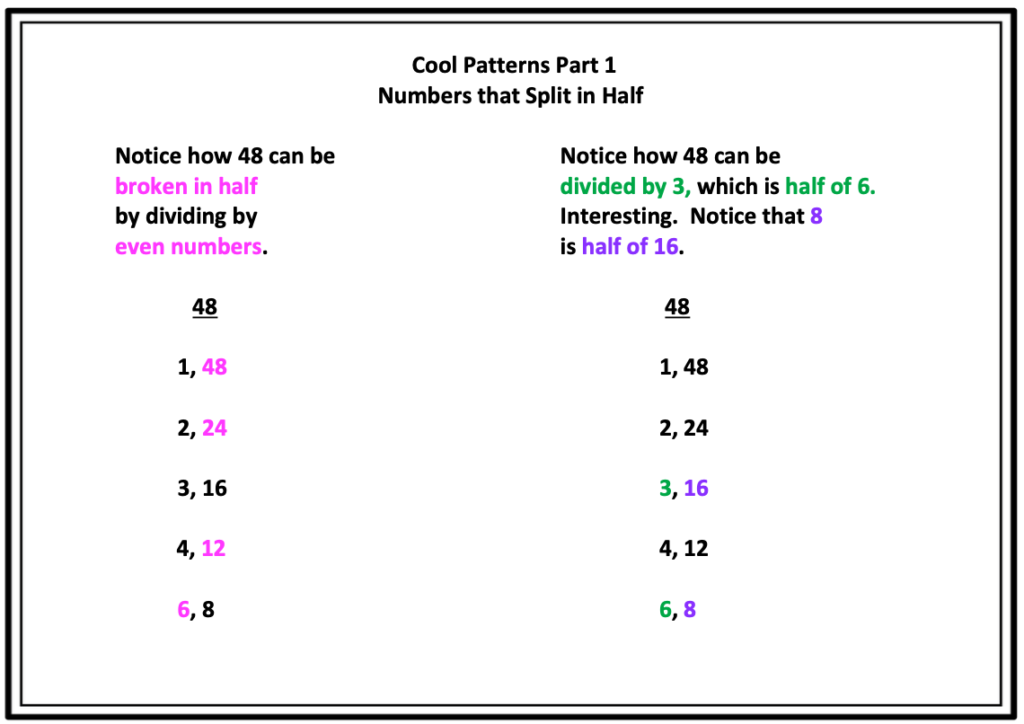How to Approach Home School-Based Algebra 1 Successfully
Introduction: Is your teen ready for Algebra 1? Are there topics you covered in Pre-Algebra that are still a mystery? The leap from middle school math to Algebra 1 is a big one. Keep reading to discover how to approach homeschool-based Algebra 1 successfully.
#1 – Be Confident in the Basics for Home School-Based Algebra 1
Is your teen confident in middle school math concepts needed for home school-based Algebra 1? This is where you want to begin.
Have you ever attempted to put an office chair together? The assembly process can be daunting. Nuts, bolts, tubes, and directions that don’t make sense. Despite this, you courageously begin attaching parts in ways that make sense to you. As you feverishly delve into the project, the chair takes shape. Next, the family cat lands on the chair. The chair tumbles to the floor as the cat disappears as fast as it appears. As you survey the damage, you find a plastic bag with more nuts and bolts.

Beginning Algebra 1 can be like that, too. Before beginning Algebra 1, your teen must have the “nuts and bolts” needed before beginning Algebra. Three important math concepts commonly applied in Algebra include divisibility rules, listing factors of numbers, and fraction operations. Of these three, challenges with fraction operations are the most often concept observed.
Let’s look at these three concepts closer.
Divisibility Rules
When students use divisibility rules, they can find factors of numbers much faster.
Below is a chart listing commonly used divisibility rules. You may be familiar with some of these. Even numbers are divisible by 2, numbers ending in 0 are divisible by 10, and numbers ending in 5 or zero are divisible by five. There ae also rules for 3, 6, 9, and 11.

Once students have learned the divisibility rules, it is significantly easier to list the factors of numbers.
Listing Factors of Numbers
When students list factors of numbers, they write the numbers that when multiplied equal a specific number. For example, the factor pairs for 12 include 1 x 12, 2 x 6, and 3 x 4.
Some math books will list factors of numbers like this:
12: 1, 2, 3, 4, 6, 12
Though this method is mathematically correct, I have found that students often confuse the horizontal method of listing factors, with determining the least common multiple.
For example: “Find the Least Common Multiple for 12 and 15.”
12: 12, 24, 36…
15: 15, 30, 60…
To decrease confusion, and to help students quickly identify factor patterns, list the factors vertically. See the example below. On the left side of each column, students list divisibility factors of number 48. Next, the numbers on the right of the factor column can be broken in half from the largest to the smallest. Other factors can be determined from memorized math facts and last, division.
I cannot begin to express
how much
my students
love this method!

Fraction Operations
Fraction operations are concepts included in high school math. Fraction operations include tasks such as reducing to the lowest term.
So what’s a parent to do?
Review fraction operations before beginning Algebra 1. Continue this review throughout the year. It will be some of the best time spent as fraction concepts continue into Life Skills, Algebra 2, Geometry, Advanced Math, Statistics, Pre-Calculus, and Trigonometry.
How?
No worries. I’ve got you covered. The following links will provide specific examples to successfully.
#2 – Permission Slow Down
The first 1 – 2 weeks you observe your teen zipping through the assignments. Then it happens. Integers. Integers with numbers in and outside the parenthesis sign make the order of operations more complex. You look at the lesson plan and dates to complete the various assignments. You may think,
“Well, maybe the next section will be easier.”
So you continue into the section on equations. Oh, no. Fractions and integers are reappearing again! At the same time, you are feeling pressure from the schedule. How will you ever get through the book if you pause here?
Give yourself
permission
to slow down!
When driving around sharp curves of the road you are not familiar with,
you would do the same thing.
It is just as important that you slow down as your teen experiences anxiety traveling through new, mystified territory. Why? In the following chapter, concepts in one will build on the other.
For example, before frosting a cake, you need a cake to frost. Before students can work algebraic expressions with fractions, they need to know how to solve fraction operations (add, subtract, multiply, and divide).
So what do you do, if your teen remains stuck?
Ask for help.
#3 – It’s Ok to Ask for Help
Be brave. Be courageous. Ask for help if you and your teen have reached a stopping point. Check with other parents and your teen’s peers. Join a home school co-op that provides assistance with Algebra skills or is familiar with skilled tutors in home school-based Algebra 1.
In addition, look for online videos related to the topic. When entering a description in the search engine, be as specific as possible. For example:
“How to solve equations with fractions.” After the page pulls up, at the top, you will see different formats to select from. My favorites include, “videos” and “images”.
Also, note that the strategy used by each video presenter may differ from the way your curriculum teaches.
When sifting through videos, certain video providers will make sense to you. Remember these providers for future reference. Visit their home website to learn more about the person or persons presenting and the topics covered.
Furthermore, search for skilled tutors providing one-to-one tutoring. Though there are many such resources online, it has been my experience that many of my students benefit best from in-person sessions. I base this statement on my experience teaching online during the COVID epidemic.
#4 – How to Make the Most of Algebra 1
You paid a hefty amount for the home school-based Algebra 1 curriculum. Take the time to dig deep into each section, taking your time till the concept is understood.
Algebra instruction and practice should occur for an hour and a half a day, five days a week. This regular practice helps students build and maintain concepts learned. Anything less only encourages learning gaps in the form of forgetting concepts learned. On the other hand, If students work on math steadily throughout the week, they will most effectively remember concepts needed in future assignments.
I work with students who work on math less than 5 days a week. It is not unusual to receive an email the night before their once-a-week class, with questions about the assignments given for the week. This reminds me of making waffles.
Let me explain. When making waffles, I like to make sure I use all of the batter. I don’t waste anything. This being the case, the last waffle is much smaller and looks very different from the full-sized waffles made at the beginning. I am left with a part vs. a whole waffle. This is what it is like when students work on math once a week. When they only remember how to do a much smaller part, it makes it difficult to remember the whole.

Conclusion
In conclusion, students have great potential for success in home school-based Algebra 1. Key features which provide this success include, reviewing basic middle school concepts needed for algebra, permission to slow down, asking for help, and spending adequate time for instruction and practice.

Looking for More Materials?
Click the button below to view more of my educational resources!
